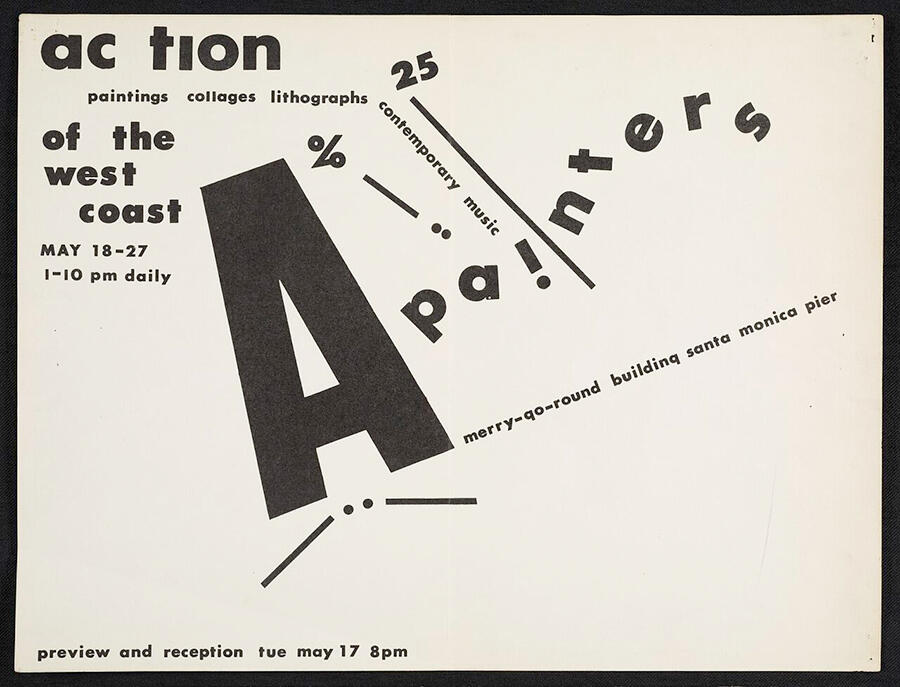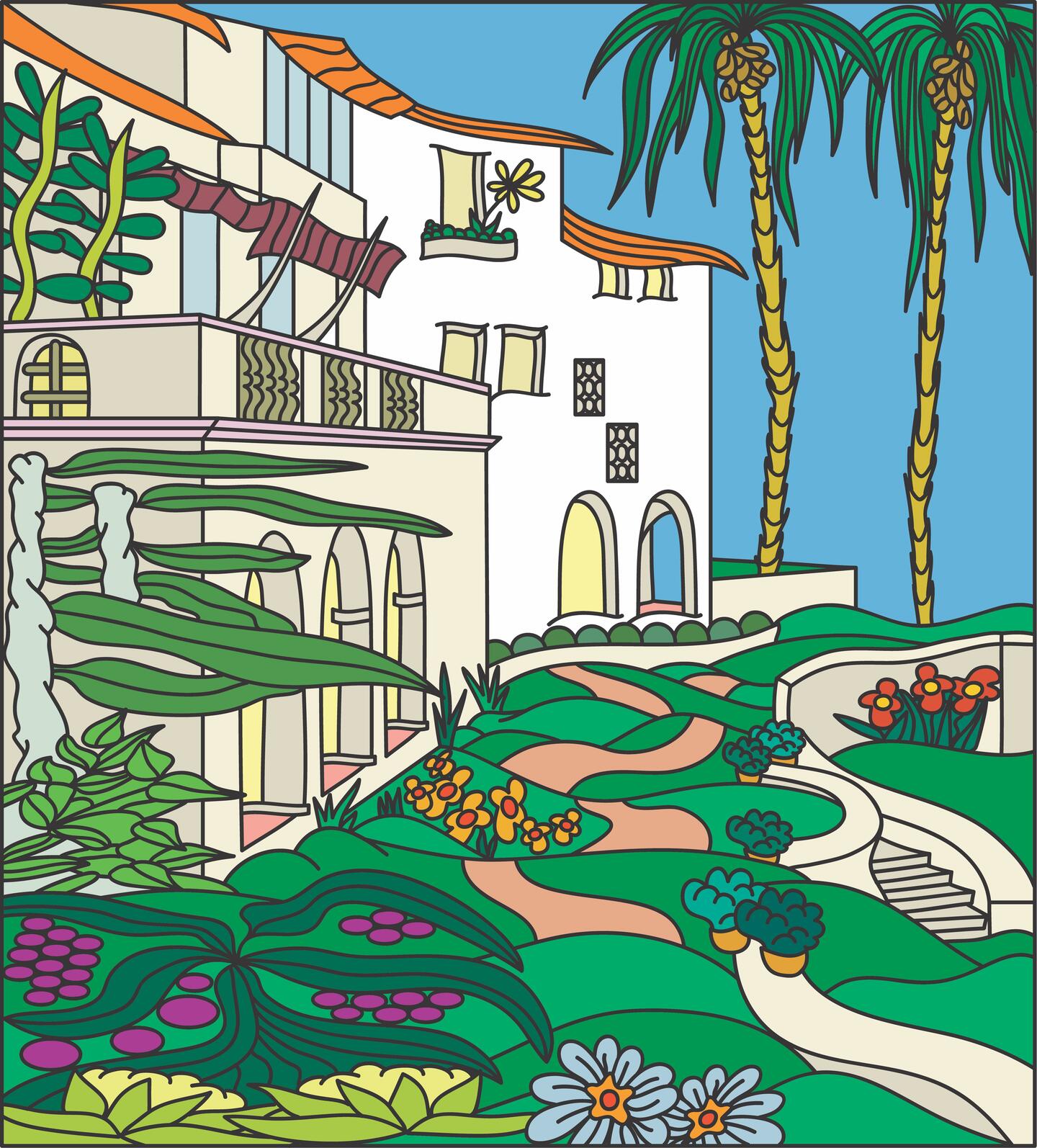‘Against the Edge’ Tells New Stories About the Westside
Jay Ezra Nayssan shares insights into the Frieze Projects program putting contemporary art in dialogue with cultural sites across Santa Monica and beyond
Jay Ezra Nayssan shares insights into the Frieze Projects program putting contemporary art in dialogue with cultural sites across Santa Monica and beyond
Curated by Jay Ezra Nayssan as part of Frieze Projects, ‘Against the Edge’ brings the work of contemporary artists into dialogue with cultural sites across the Westside, unearthing narratives of liberation and creativity as well as exile and occlusion. But, as Nayssan explains, he’s less interested in rehashing history than in teasing new stories out of it
Ever since Del Vaz Projects moved to Santa Monica in 2020, I’ve been thinking of a program that would put contemporary art into a dialogue with the historic homes in this area. For ‘Against the Edge’, I have drawn on Norman Klein’s History of Forgetting (1997), in which he uses the idea of the ‘anti-tour’ of places that don’t or no longer exist. I’m interested in Klein as a guide to a kind of style: both as an author and a teacher at CalArts, Klein practiced a form of storytelling in which history and possible fictions merge into this kind of myth-making, for which he uses the psychological term ‘imago’. ‘Against the Edge’ only features sites that still physically exist, however, and even if some of their histories have been ‘forgotten’, there is active effort in keeping them alive.

So, the purpose of bringing these artists into relation with these sites is to create new stories that, like Klein’s narrative, live somewhere between fiction and fact. For example, bringing the work of Kelly Akashi, as the daughter of imprisoned Japanese-Americans, into the home of the Feuchtwangers: exiled Jews escaping death camps. Did Isamu Noguchi, who electively self-interned in the Japanese-American camps, and in 1951 had a tea ceremony at the Eames House a short drive away, ever meet the Feuchtwangers and their circle? Nicola L. didn’t really live in LA until she was close to passing away, but using her work to queer the Thomas Mann House, also raises a kind of ‘what if ... ’. Thus, the program is about weaving these new, partly fictionalized stories, out of the record.
We are staging a performance in the Santa Monica Pier’s Merry-Go-Round Building to, in a way, kick off the ‘Against the Edge’ program. This building was the site of the first proper exhibition Walter Hopps curated, ‘Action 1’, in 1954. Hopps covered the carousel in tarp and hung art from it: a kind of inverted anticipation of the rotunda of Guggenheim, where he would later make major exhibitions. Was it almost a premonition? The piece we are staging is John Cage’s Speech (1955), which formed part of ‘Action 1’, and is scored for five radios, each tuned to different stations. Operators shifting the radio dials, creating an unorganized, unthreaded sound event. Again, it’s about that disjunctive overlap of sources, that mingling of real information and partial accounts, that produces an imago of the city.

Built in 1906, the former Venice City Hall has since 1980 been home to Beyond Baroque. Emerging from the Venice Beat scene as an experimental zine run from a storefront by founder George Drury Smith, Beyond Baroque has evolved into a leading literary arts organization, providing workshops, readings, film screenings, a publishing imprint and a specialist bookstore boasting 40,000 volumes, including rare and small press publications. It has hosted everything from early Mike Kelley performances to readings by Amanda Gorman, Allen Ginsberg, Bob Flanagan, Amiri Baraka and countless more.
Presenting Tony Cokes’s work here is about building upon the legacy of Beyond Baroque as a beacon for beat poetry and punk. The musicality and rhythm of Cokes’s work, and its connection to vernacular forms of music and spoken word, will resonate in Beyond Baroque’s theatre.
The initial reason I wanted to include Cokes in the program was because of a series of video works he showed a few years ago at Hannah Hoffman that reflected on the legacy of Paul Revere Williams: a Black architect who helped design Black neighborhoods in Los Angeles, like Pueblo del Rio, as well as commissions for Hollywood stars. I wanted to acknowledge the fate of nearby Black communities like the Belmar Neighborhood, which the City of Santa Monica literally set on fire in 1950 to make way for development, and the Oakwood community in Venice Beach, the only remaining Black community in Southern California within a mile of the beach, which has also been threatened by development.
But actually, we’re not showing those works about Williams, but instead, a more recent commission that explores the relationship between art and real estate through the 1988 Tompkins Square Park Riot, a piece paying homage to Okwui Enwezor, and a piece about the labor of mourning. I wanted to do something that wasn’t the expected thing. That desire runs throughout the program: working with perhaps not iconically ‘LA artists’, and homes that people are not necessarily familiar with, creating a sense of displacement. I want to speak to the unease of this place as a paradise. When the playwright Bertolt Brecht moved to Santa Monica in the 1940s, he complained that it was too beautiful to make any work here. I want ‘Against the Edge’ to convey some of that disquiet.

With his wife Katia and children, the Nobel Prize-winning author Thomas Mann moved to Los Angeles via Princeton in 1940, having fled Nazism in his home country. Before commissioning his new home in Pacific Palisades, Mann toured California modernist buildings in 1938 with Richard Neutra, ultimately selecting the Berlin-born, German-Jewish architect Julius Ralph Davidson, who designed some of the first Case Study Houses. The Manns stayed at the house until 1952, Thomas writing his two last novels here, before McCarthyism drove them back to Europe. Since June 2018, it has been a residency centre.
There are few threads that come together in presenting Nicola L.’s work at the Thomas Mann House. Because Nicola L.’s work often brought sexuality to the fore – with her penetrable, vinyl sculptures pointing to the erotic body, and the fetish – one is about queering the space, to speak to Mann’s own complex, closeted homosexuality, which is still very controversial. You find an echo of this in the clear contrast between the house’s California modernist ‘outside’ and its interior, which the Manns furnished in a very traditional, bourgeois, Central European style that really offended the house’s architect.
Nicola L.’s work was also confronting modern architecture as a male-driven language driven by a hegemony of vision, and its almost sterile lack of the sensual (think of how Le Corbusier or Adolf Loos placed sinks right at the entrance of certain villas, demanding you to wash your hands). Nicola L. really rubbed against this, her art pointing to an architecture of sensuality and of community, works that could be felt and smelt and heard.
The work we’re installing at the House is one of Nicola L.’s fabric banners, which she first produced for the 1968 Student Revolt in Paris. It proclaims Nous Voulons Entendre, or ‘We Want to Hear’, but the verb ‘entendre’ can also mean ‘to sound’, or ‘to understand’, which interests me. As well as highlighting the sensory in relation to modernism, this slogan and its political context connects to a different moment of protest: the anti-fascist radio addresses which Thomas Mann recorded in his office in this house, broadcast by the 55 BBC to Nazi Germany, Switzerland, Sweden, and the occupied Netherlands and Czechoslovakia from 1940–45. Radio transmission also brings us back to the John Cage staged on the Pier.

The ‘demonstration house’ for the planned Miramar Estates, the Spanish-style Villa Aurora was completed in 1928, with luxury features like electric garage doors and a pipe organ to accompany movie screenings. Following the Wall Street Crash, it failed to sell and fell vacant in 1939. In 1943, it was acquired by Lion Feuchtwanger, author of The Oppermanns (1934) and his wife, Marta. With Salka and Berthold Viertel’s nearby home, the Villa became a meeting point for émigrés like Bertolt Brecht, Alma Mahler and Arnold Schoenberg. After Lion Feuchtwanger’s death in 1995, it became a residency for artists.
Lion and Marta Feuchtwanger arrived in Los Angeles in 1941. They bought this place in 1943. It cost $9,000, which was a small sum even then. In Marta’s oral history, the house was so run-down that the couple had to spend the first night in sleeping bags in the garden.
By placing Kelly Akashi’s work here, I wanted to explore the fact that just a few months after the Feuchtwangers arrived here with all their support, Executive Order 9066 was issued, forcing Japanese-Americans into internment camps. So almost the same fate the Feuchtwanglers were escaping in Europe was happening in their refuge. Many of the Japanese-Americans interned were from Santa Monica and Venice. Akashi’s own father and grandparents had to leave Boyle Heights to be interned at Poston Internment Camp in Arizona.
There’s this overarching narrative that is emerging with the work at Del Vaz that connects here. With shows like ‘Shell’ with Heidi Bucher (who installed her ‘Bodyshells’ sculptures on Venice Beach in 1972), and others. I was really looking at the protective nature of the shelter, whereas now I want to look at the precarity of place and space and shelter. The work by Julie Becker that will be shown at Del Vaz as part of the program really speaks to this idea too of the precarity, or faultiness, of the ‘home’ in Los Angeles. I think ‘faultiness’ is a good word to use for this idea in LA, where we are literally on a fault line.
As told to Matthew McLean
This article first appeared in Frieze Week, February 2023 under the headline ‘Westside Stories'
Main image: Eames House, 2023. Illustration: LILKOOL
























